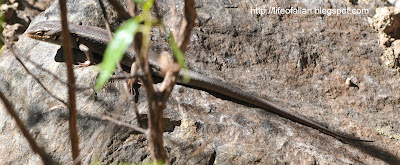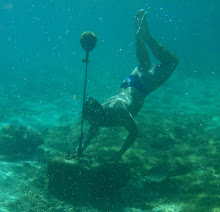
Warrumbungle National Park is one of those places that just feels really right from when you first enter the park. Great nature, some of the most spectacular views NSW has to offer, a good selection of wildlife and lovely campsites - all in all an excellent place for a long weekend.


The only negative thing I can say about Warrumbungle National Park, is that as a bird habitat it is not different enough from areas much closer to Sydney to support more rare and "exotic" bird species.

My Danish visitors were, however, not too concerned about the lack of ticking possibilities and frankly, I enjoyed being able to concentrate on doing some good bushwalking rather than having to stand and examine any scrub or bush that had managed to produce a chirp - lovely to know that there was no chance of the LBB (little brown bird) that had produced the sound would be new on my list.

The creature that can get those fresh of the plane Danes fired up is the kangaroo! After nearly six years in Australia, I had forgotten how strangely different these jumping marsupials are compared with the fauna at home. Maybe as a consequence of the new found attention on their behavior, we managed to experience something I have only seen very briefly before, kangaroos fighting each other. Two younger males from a little group of kangaroos were on their back legs circling each other while punching with their front legs and once and a while trying to land a kick from those powerful hind legs.



At first it seemed much like a part of a game, but as it continued it was pretty clear that it was not just for fun and that "the game" would continue till a winner was found.

White-winged Choughs greeted us when we returned to the campsite - indeed they greeted us wherever we walked - warning everyone about our arrival. The Leaf-curling Spider below is always a good photo opportunity. Its ingenious way of recycling leaf litter allows it to sit protected while keeping watch over its web. Many other spiders do not dare to be actively hunting during the day, since the roles can easily change and they would become the hunted. Notice how the leaf-curling spider sits with a few of its legs gently placed onto the web, ready to strike as soon as it registers vibrations caused by caught prey.

The drive from Gundabooka to Warrumbungle had taken quite a bit of the day and we decided to have an early night, the following day we would do the Grand High Tops circuit, which is best done well rested.

We had arrived late at the campsite and had had some difficulty in finding good flat areas for our tents - at least flat areas in safe distance from known snorers. I had, after quite some time, found a great spot away from other tents and had happily pitched my tent. Crawling into my tent that night, my head torch pointed straight down into the ground and I noticed a few circular holes with shiny reflections in them .. I had apparently camped in the middle of a spider colony! I was unlikely to find a better spot for my tent in the darkness and the action packed dirt just outside my tent gave a fantastic opportunity for playing around with my macro lens (the Sigma 150mm f/2.8) trying to get focus (and flash) on the spider sitting approximately 5 to 10 centimeters deep in its burrow .. It took quite a few attempts before I got the one above.
















































